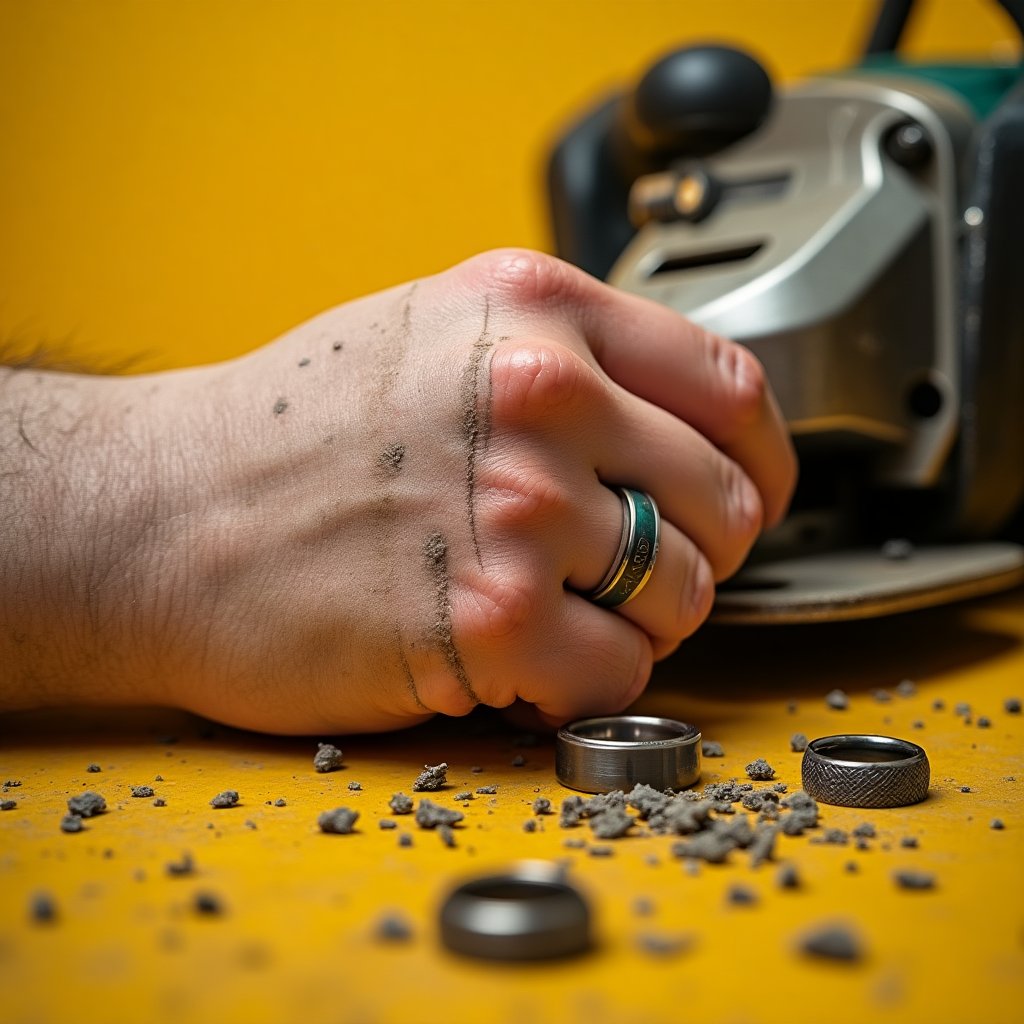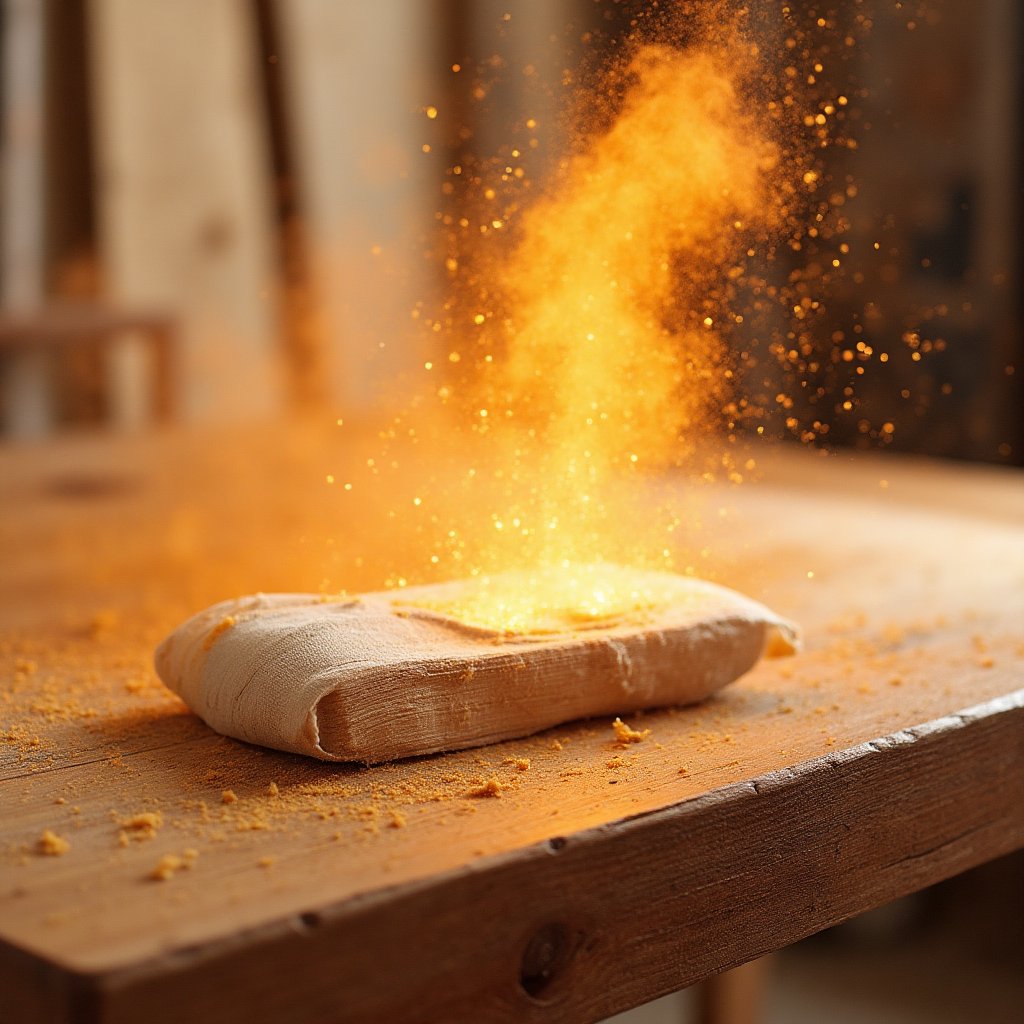Why Your Wedding Ring Could Be Your Biggest Workshop Hazard
Let’s face it: the workshop is a dangerous place. We all know the risks—table saws, angle grinders, and even the humble hammer can turn into weapons of mass destruction if we’re not careful. But there’s one danger most of us never even think about: the wedding ring on your finger. Yes, that shiny symbol of love and commitment could be a ticking time bomb in your workshop. Don’t believe me? Let me tell you the harrowing story of Stumpy Nubs (James Hamilton), a seasoned woodworker who learned this lesson the hard way.
The Accident That Changed Everything
Back in 2019, Stumpy Nubs was working on a large wooden bench using an angle grinder equipped with a chainsaw-style carving disc. You’ve probably seen his videos—Stumpy is a master of his craft, and his work is nothing short of inspiring. But on this day, disaster struck. The grinder kicked back, and in a split second, his hand was severely injured. Blood, pain, and panic ensued. But here’s the kicker: it wasn’t just the injury that made this incident so terrifying—it was the titanium wedding ring on his finger.
“I never thought this could happen to me,” Stumpy admits in his video. “I used to wear a titanium wedding ring on my left hand. This is what’s left of it now.” As the swelling from the injury increased, the ring became a deadly constriction, cutting off blood flow and threatening to cost him his finger. Even the emergency room doctor botched the situation, sending him home with the ring still on his stitched-up finger. Stumpy ended up having to remove the ring himself using a rotary tool with a diamond blade—a slow, painful, and dangerous process.
Why Titanium and Tungsten Rings Are a Disaster Waiting to Happen
Stumpy’s story is a wake-up call for anyone who wears a ring in the workshop. Titanium and tungsten rings have become increasingly popular because they’re durable and scratch-resistant—but that strength is a double-edged sword. When an injury causes swelling, these rings are nearly impossible to remove without special tools. Even emergency rooms struggle with them. And if a power tool like a chainsaw catches the edge of the ring? You could lose your finger in an instant.
But the risks don’t stop there. Ever heard of degloving? It’s as horrifying as it sounds. It happens when a ring catches on something—like a ladder rung or a door—and the flesh of your finger is pulled off the bone like the finger of a glove. Stumpy warns, “This isn’t just a risk with power tools. Catching your ring on anything can cause degloving.” And it’s not as rare as you might think. In the U.S. alone, it happens 150,000 times a year—five times more often than table saw injuries.
The Solution: Silicone Rings
After his accident, Stumpy swore off metal rings entirely—at least in the workshop. Instead, he turned to silicone rings, a safer alternative designed to break under pressure. “These are designed to break under a load of about 30 pounds without damaging your skin or causing a serious injury,” he explains. Silicone rings have come a long way in recent years. They’re not only functional but also stylish, with a range of colors, patterns, and designs that mimic wood burl or other materials. Plus, they’re affordable—you can grab a multipack for around $2 each.
Stumpy offers some tips for choosing the right silicone ring:
- Measure your finger accurately: Use a strip of paper or visit a jewelry counter at Walmart or any other store that sells rings.
- Buy the next size down: Silicone stretches over time, so you don’t want it to end up too loose.
- Look for channels on the inside: These prevent moisture buildup, which can be uncomfortable and unhealthy.
If you’re in the market for silicone rings, Stumpy recommends checking out the options available on Amazon.ca. Trust me, it’s a small investment that could save you a lot of pain—and possibly your finger.
Workshop Safety: Lessons Learned
Stumpy’s accident is a stark reminder that we can’t afford to be complacent in the workshop. “I used to think I was invincible,” he admits. “But this was my wake-up call.” He now avoids wearing metal rings entirely when working and advocates for silicone rings as a safer alternative. It’s a simple change that could make all the difference.
Stumpy also shares some additional workshop wisdom, including a shout-out to Ken Rizo at Woodturners Wonders, his go-to source for turning supplies like sanding materials and CBN wheels for his grinder. “If you haven’t seen what CBN wheels can do, you’re missing out,” he says. Seriously, check them out.
The Bigger Picture: Workshop Safety Matters
Stumpy’s story isn’t just about rings—it’s about the importance of taking every precaution in the workshop. Whether you’re a seasoned pro or a weekend warrior, safety should always be your top priority. Don’t let complacency put you at risk. Take it from someone who’s been there: a little prevention can save you from a world of pain.
Watch Stumpy Nubs’ Full Story
Want to hear the full story straight from the man himself? Check out Stumpy Nubs’ original video below. It’s a must-watch for anyone who works with tools—or wears a ring.
Join the Conversation
Have you ever had a close call in the workshop? Do you wear silicone rings? Share your thoughts, stories, and tips in the comments below. Let’s keep each other safe and informed. And if you’re not already part of the iNthacity community, apply to become a permanent resident of the Shining City on the Web. Together, we can create a safer, smarter, and more innovative world.
Stay safe, stay creative, and remember: your workshop doesn’t have to be a danger zone. With the right precautions—and the right mindset—you can turn it into a place of endless possibilities.
Wait! There's more...check out our gripping short story that continues the journey: The Insatiable Gloom
Disclaimer: This article may contain affiliate links. If you click on these links and make a purchase, we may receive a commission at no additional cost to you. Our recommendations and reviews are always independent and objective, aiming to provide you with the best information and resources.
Get Exclusive Stories, Photos, Art & Offers - Subscribe Today!


























Post Comment
You must be logged in to post a comment.